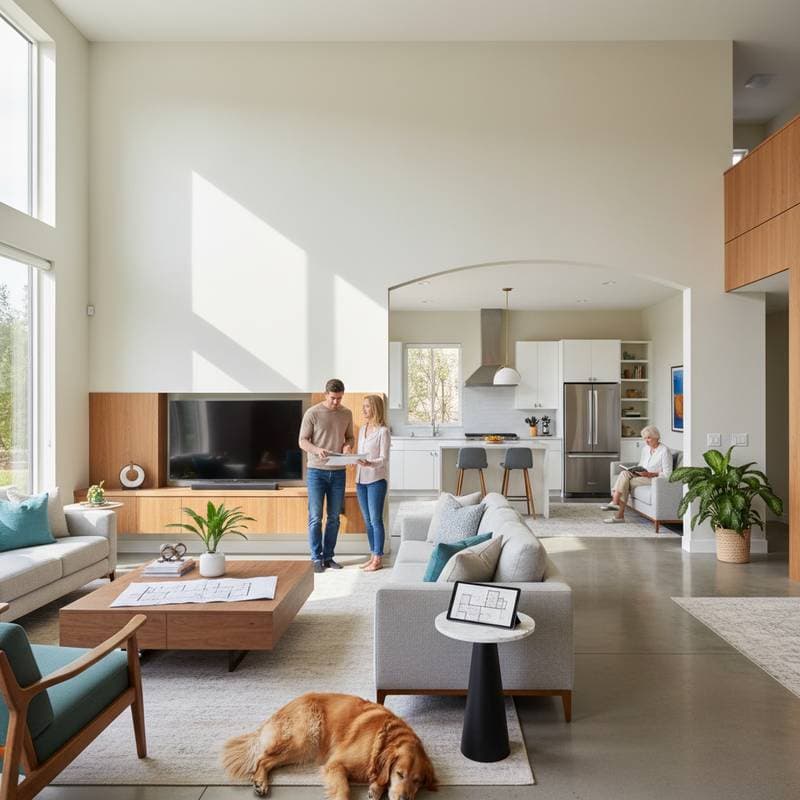Garage Conversions: A 35% Cost Increase Emerges in 2025
Garage conversions rank among the most rapidly expanding home improvement endeavors nationwide. Homeowners seek adaptable living areas, and numerous local regulations now accommodate accessory dwelling units, or ADUs. Recent figures indicate that conversion expenses escalate significantly. A 35 percent rise surprises numerous property owners, stemming from material price hikes, workforce deficits, and revised regulatory standards. This overview clarifies the implications of this escalation, outlines strategies to navigate it, and identifies circumstances under which proceeding remains advantageous.
Factors Behind the Cost Increase and Expense Allocation
The 35 percent elevation in costs arises from three primary sources: materials, labor demands, and modifications to local codes. Prices for lumber, insulation, and electrical wiring have all advanced. Several areas mandate elevated R-values, energy-efficient windows, and separate electrical subpanels for ADUs. Workforce shortages impose additional charges for certified professionals.
Detailed Cost Breakdown
| Scope Item | Material Cost Range | Labor Cost Range | Total Range | Notes on Drivers |
|---|---|---|---|---|
| Framing and insulation | $3,500 - $6,000 | $2,500 - $5,000 | $6,000 - $11,000 | Elevated R-value insulation and vapor barriers |
| Electrical upgrade | $1,500 - $3,000 | $2,000 - $4,000 | $3,500 - $7,000 | Subpanel installation, new circuits, GFCI outlets required |
| Plumbing rough-in | $2,000 - $4,000 | $3,000 - $5,000 | $5,000 - $9,000 | Expenses increase based on proximity to primary sewer line |
| HVAC system | $2,500 - $5,000 | $2,000 - $3,500 | $4,500 - $8,500 | Options include mini-split or ducted systems |
| Windows and doors | $2,000 - $4,000 | $1,000 - $1,500 | $3,000 - $5,500 | Compliance with energy codes is essential |
| Drywall and finishes | $1,500 - $3,000 | $2,000 - $3,500 | $3,500 - $6,500 | Includes paint, trim, and flooring |
| Permits and fees | — | — | $1,000 - $3,500 | Encompasses city impact fees and inspections |
A standard one-car garage conversion typically spans $35,000 to $60,000. A two-car configuration may range from $65,000 to $120,000, influenced by finish quality and site conditions.
Sequential Guide to the Conversion Process
Initiate the project with a permit consultation. Conversions alter occupancy types, necessitating evaluation by building authorities. Upon approval, adhere to this ordered progression:
- Examine the existing structure. Assess the slab for fissures, timber for decay, and walls for proper alignment.
- Design the interior layout. Diagram positions for plumbing elements, HVAC components, and window placements.
- Obtain permits. Provide detailed plans and cover fees prior to any demolition activities.
- Conduct demolition and preparation. Eliminate the garage door, outdated drywall, and stained concrete surfaces.
- Erect walls and add insulation. Employ 2x4 or 2x6 studs paired with R-13 to R-21 insulation, adjusted for regional climate.
- Integrate utilities. Position electrical conduits, receptacles, and plumbing pipes in accordance with regulations.
- Incorporate HVAC systems. Mini-split units provide effective climate control for compact areas.
- Apply drywall and complete finishes. Secure, texture, and coat surfaces. Install trim and flooring at the conclusion.
- Arrange final inspection. Coordinate with officials for approval prior to habitation.
Professional timelines average six to eight weeks. Owner-involved or partial self-construction efforts may extend to three months, accounting for permit processing and inspection availability.
Common Errors That Escalate Expenses or Cause Inspection Rejections
- Neglecting moisture management. Incorporate vapor barriers beneath flooring and closed-cell spray foam adjacent to slab perimeters.
- Insufficient insulation application. Inadequate layers lead to moisture buildup and elevated utility expenses.
- Overlooking floor elevation. Align interior levels with the primary residence using sleepers or self-leveling compounds.
- Failing to meet egress standards. Sleeping areas require window clearances of at least 5.7 square feet.
- Employing inadequate wiring. Install 20-amp circuits for receptacles and illumination to satisfy codes and support demands.
Remedying these issues post-drywall installation can multiply expenditures.
Guidelines for Choosing Professional Assistance or Self-Execution
Apply these decision criteria to select an approach:
- Evaluate personal expertise. Individuals with backgrounds in framing, drywall installation, and finish work may undertake limited self-efforts.
- Consider safety implications. Electrical and plumbing tasks present risks of electrocution or water damage; assign these to qualified specialists.
- Assess tool resources. Essential equipment includes a miter saw, power drill, framing nailer, and moisture detection device.
Self-performers manage demolition, insulation, and painting phases. Professionals oversee structural framing, electrical, and plumbing elements. A combined method yields savings of ten to fifteen percent when managed effectively.
Selecting Contractors and Evaluating Proposals
Solicit a minimum of three detailed proposals. Each must delineate project scope, material specifications, and schedules. Utilize a comparison framework for clarity.
| Line Item | Spec or Scope | Contractor A | Contractor B | Contractor C | Variance Notes |
|---|---|---|---|---|---|
| Electrical | 100-amp subpanel, new circuits | $6,200 | $5,800 | $7,400 | Verify permit inclusion and GFCI quantity |
| Plumbing | Bath rough-in, vent stack tie-in | $8,900 | $9,400 | $8,700 | Confirm measurement to main sewer |
| HVAC | Mini-split 18k BTU | $5,000 | $5,600 | $5,200 | Validate SEER efficiency and warranty terms |
Strategies for Budget Control and Project Success
To counter the 2025 cost surge, prioritize modular designs that minimize custom work. Source materials from bulk suppliers to reduce per-unit expenses. Engage early with local inspectors to preempt code revisions. These steps preserve affordability while ensuring compliance. Homeowners who adapt planning to current trends often realize long-term value through enhanced property utility and potential rental income from ADUs.



